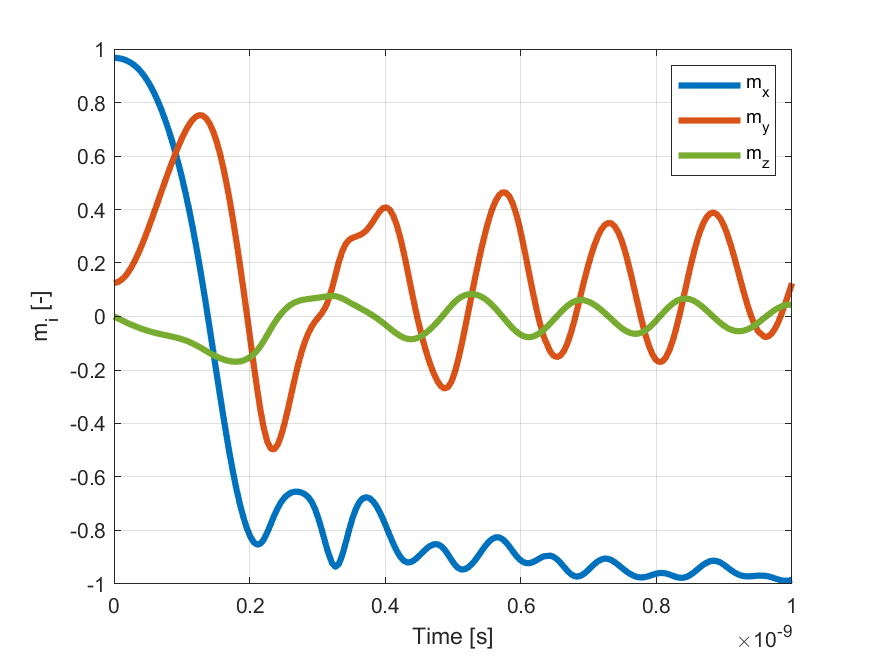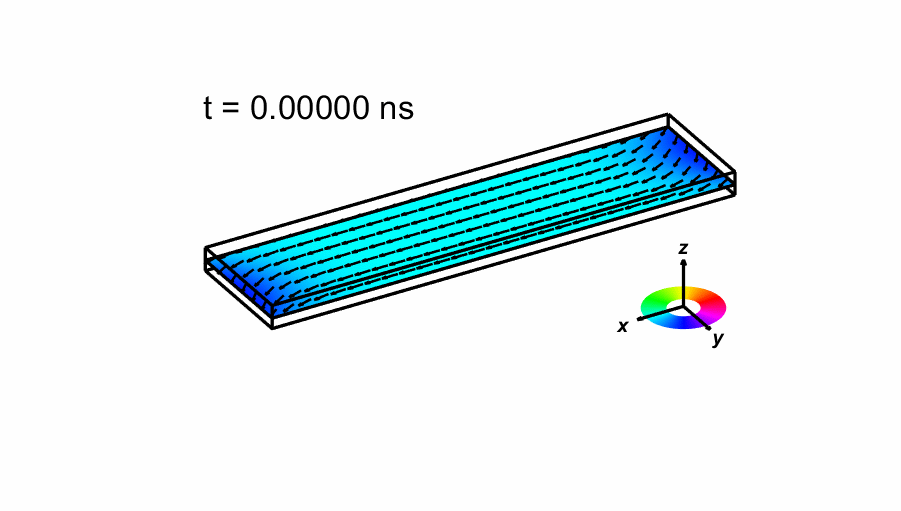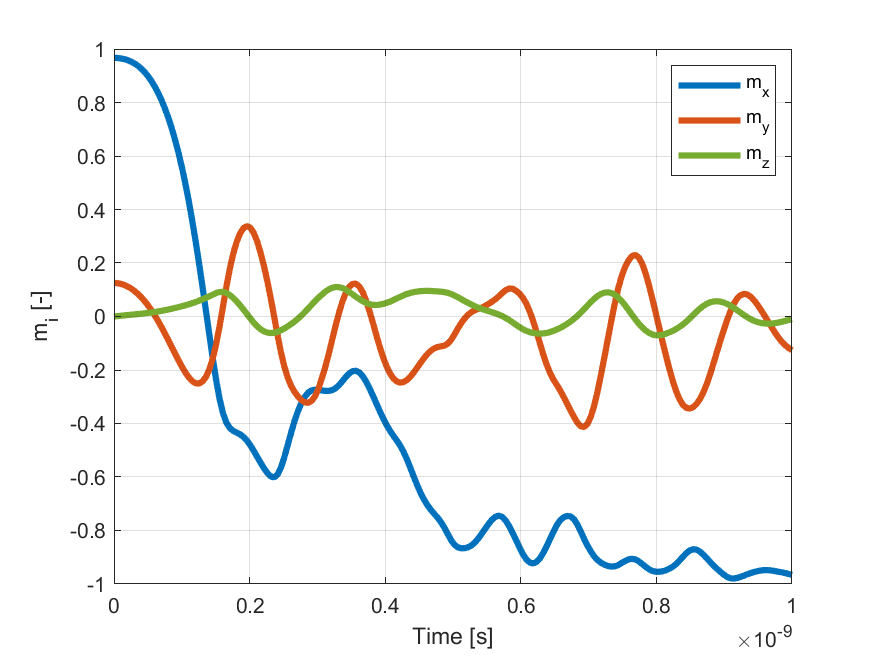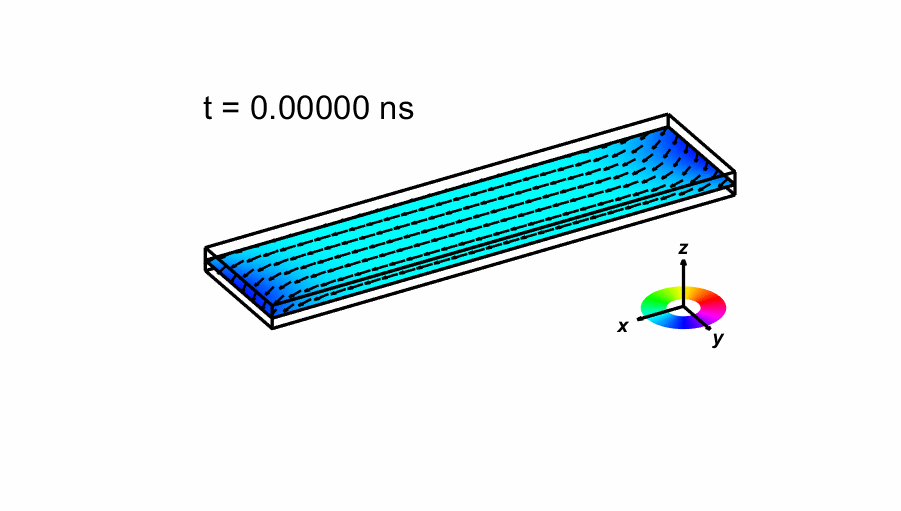µMAG Standard Problem #4 results
See the problem specification.
Disclaimer
µMAG could not succeed without the contributions
of colleagues working outside NIST. Although we value the
contributions made by these colleagues, NIST does not necessarily
endorse the views expressed or the data presented in the submitted
solutions shown below.
Solution directory
-
Comparisons
- G. Albuquerque,
J. Miltat and A. Thiaville
-
R. D. McMichael, M. J. Donahue, D. G. Porter, and
J. Eicke
-
Liliana Buda, Lucian Prejbeanu, Ursula Ebels and Kamel
Ounadjela
-
E. Martinez, L. Torres and L. Lopez-Diaz
-
José L. Martins and Tania Rocha
-
P.E. Roy and P. Svedlindh
-
Massimiliano d’Aquino, Claudio Serpico,
and Giovanni Miano
-
Dmitri Berkov
-
M. J. Donahue and D. G. Porter
-
Rasmus Bjørk, E. B. Poulsen and A. R. Insinga
Submitted Solution: Rasmus Bjørk, E. B. Poulsen and A. R. Insinga
- Date:
- October 5th, 2021.
- From:
- Rasmus Bjørk, E. B. Poulsen and A. R. Insinga
Department of Energy Conversion and Storage, Technical University of Denmark, Denmark
- Contact:
-
Rasmus Bjørk
We used the MagTense open source micromagnetic simulation framework to compute solutions to standard problem #4.
The spatial discretization subdivided the film into a collection of N rectangular prisms with edges parallel to the coordinate axes. (N = Nx × Ny × Nz), where in this specific problem we take Nx=160, Ny=40, Nz=1 in order to get cubic elements, as the film has a length four times its width. The film is assumed thin, and thus only resolved by a single point in the z-direction. The magnetization is assumed uniform within each cell.
The numerical details of the computation of the exchange and demagnetization field can be found in the references below.
The exchange field has been computed by using a standard finite difference centered stencil. The correct Neumann boundary condition has been applied to the problem. The demagnetization field was computed using an analytically correct expression for the demagnetization field from prisms, as described in the references below. The time integration of the LLG equation is performed using an explicit Runge-Kutta (4,5) formula.
Results:
- Field applied: μ0H= [-24.6,4.3,0.0] mT. The different components of the spatially averaged normalized magnetization as function of time is shown below up to t = 1 ns.

We also shown an image of the magnetization when first crosses zero below, as well as an animated sequence of the time evolution of the magnetization. The number of arrows drawn has been reduced from the actual 160x40 simulation. The color indicate the direction of the magnetization as shown in the small legend.


- Field applied: μ0H= [-35.5,-6.3,0.0] mT. Again the different components of the spatially averaged normalized magnetization as function of time is shown below up to t = 1 ns.

We also shown an image of the magnetization when first crosses zero below, as well as an animated sequence of the time evolution of the magnetization. The number of arrows drawn has been reduced from the actual 160x40 simulation. The color indicate the direction of the magnetization as shown in the small legend.


Data:
The time series data contain 4 columns: time [s], mx, my, mz while the vector data contain 6 columns: x [m], y [m], z [m], mx, my, mz.
References:
[1] Bjørk, R., Poulsen, E.B., Nielsen, K.K., Insinga, A.R., MagTense: A micromagnetic framework using the analytical demagnetization tensor, J. Magn. Magn. Mater., .v 535, pp. 168057 (2021), DOI: https://doi.org/10.1016/j.jmmm.2021.168057
[2] Bjørk, R., & Nielsen, K. K., MagTense. Technical University of Denmark, DTU Energy, Department of Energy Conversion and Storage, (2019) DOI: https://doi.org/10.11581/DTU:00000071
[3] Insinga, A. R., Poulsen, E. B., Nielsen, K. K., & Bjørk, R., A direct method to solve quasistatic micromagnetic problems. J. Magn. Magn. Mater., .v 510, pp. 166900 (2020), DOI: https://doi.org/10.1016/j.jmmm.2020.166900
Please send comments to [email protected] and join the
µMAG discussion e-mail list.
Site Directory
µMAG organization / NIST CTCMS /
[email protected]
16-NOV-2021











